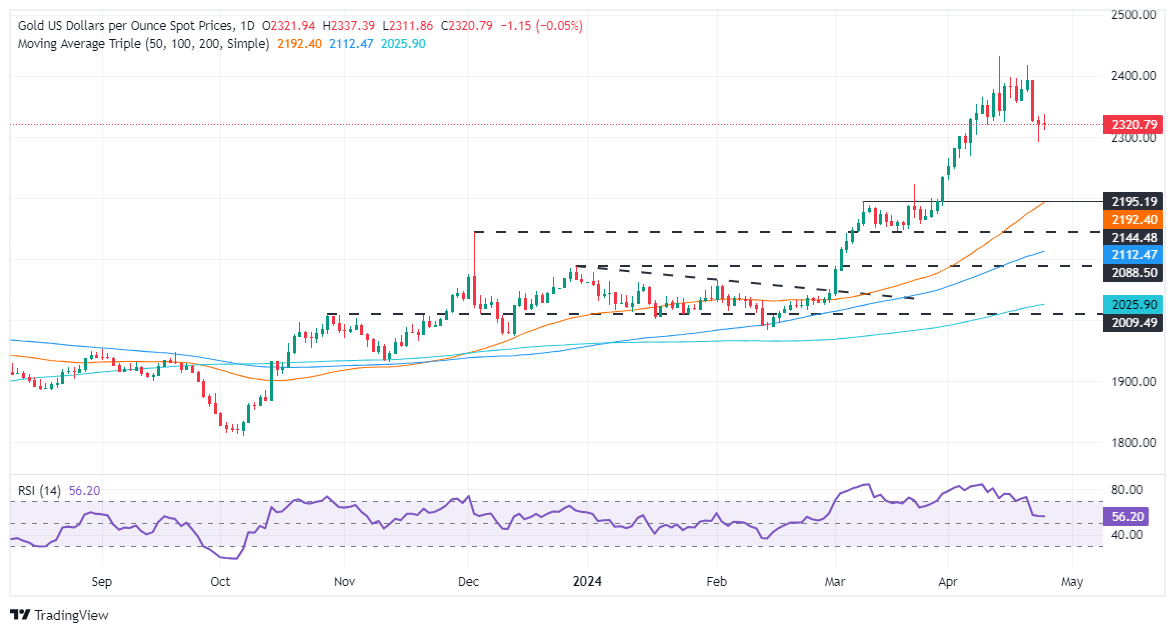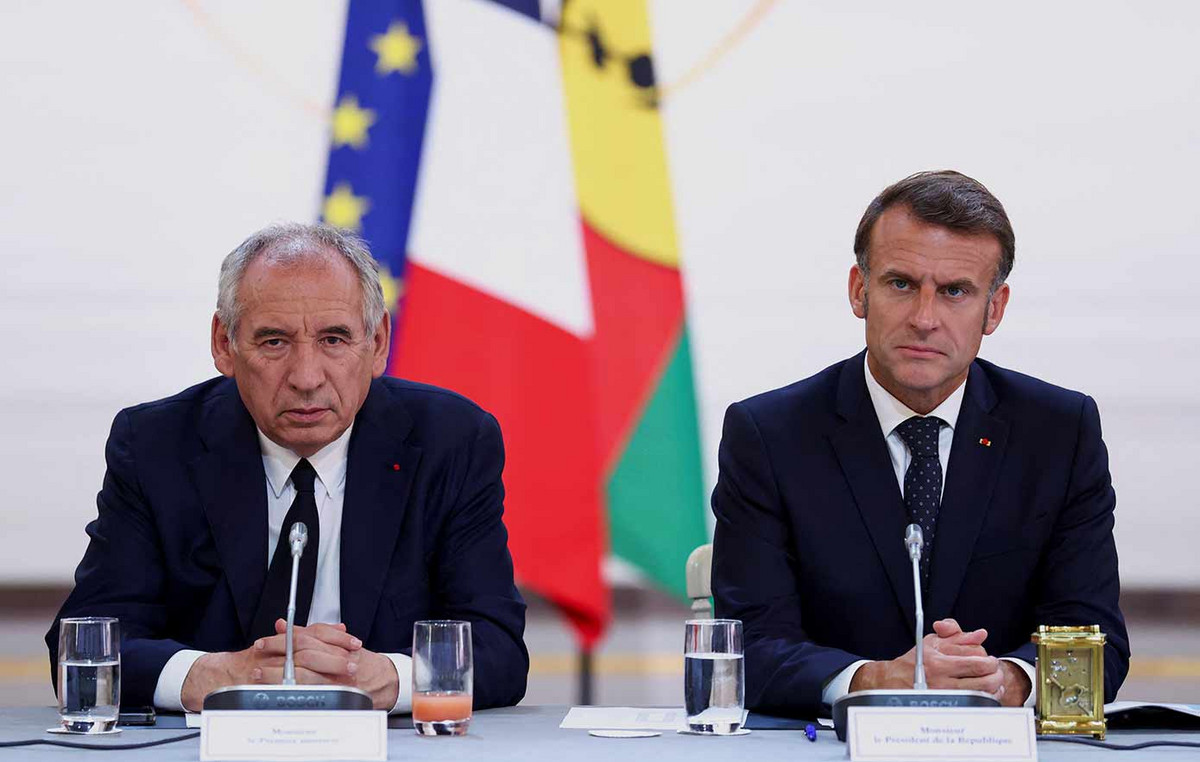- Gold is recovering from its recent losses, buoyed by market interest despite the strength of the US Dollar and rising US Treasury yields.
- The decrease in tensions in the Middle East contributed to increasing market stability, which reduced the appetite for buying Gold.
- Durable goods orders in the US were strong, but expectations of Fed rate cuts carry over to the end of the year.
Gold regained some ground on Wednesday after posting consecutive negative sessions earlier in the week as geopolitical risks eased. Better than expected economic data in the United States, the strength of the US dollar and the rise in US Treasury yields were no excuse for buyers of the gold metal, who intervened in the latest decline.
XAU/USD is trading at $2.327 and has gained 0.28%. The Middle East conflict appears to have de-escalated after the exchange of fire between Iran and Israel. Expectations of a Federal Reserve (Fed) rate cut in June and July have been tempered as most market participants speculate that the federal funds rate will be cut for the first time in September 2024.
The US Commerce Department showed March durable goods orders beat estimates and February numbers, while underlying sales missed forecasts but showed improvement compared to the previous month.
Daily Market Summary: Gold Trims Losses on Optimistic Durable Goods Orders
- Durable goods orders in the US increased significantly in March, increasing 2.6% monthly, up from 0.7% previously and exceeding 2.5%. Excluding transportation, durable goods orders rose 0.2% month-over-month, which was an improvement over February's 0.1% increase but fell short of the 0.3% forecast.
- Upcoming first-quarter GDP data and PCE core inflation figures will provide additional insight into the Fed's potential rate reduction schedule. The Fed's preferred inflation gauge, the underlying personal consumption prices (PCE), will remain stable at 0.3%. The annual core PCE rate is expected to decline to 2.6%, down from 2.8% in February, indicating a possible easing of inflationary pressure.
- Tuesday's softer-than-expected US S&P Global PMI report raised the odds of a rate cut in July. Chris Williamson, Chief Economist at S&P Global Market Intelligence, wrote: “The US economic recovery lost momentum early in the second quarter, with preliminary PMI survey results indicating business activity growth below trend in April,” which could help reduce persistent inflation, which remains well above the Fed's baseline target of 2%.
- Data from the Chicago Board of Trade (CBOT) suggests traders expect the federal funds rate to end 2024 at 4.98%, up from 4.965% on Tuesday.
- The 10-year US Treasury reference rate rises six basis points (bp) and stands at 4.66%.
- The US Dollar Index (DXY) rises 0.18% to 105.87.
Technical analysis: Gold price remains firm near $2,320
Gold regained some ground despite forming a “bearish engulfing” chart pattern, which opened the door for a pullback. Although buyers have the upper hand on Wednesday, they are not out of the woods yet. Gold must gain momentum above the April 19 low of $2,373, so it can hold out hope of testing $2,400. Once reached, the next stop would be Friday's high of $2,417, followed by the all-time high of $2,431.
On the other hand, if XAU/USD prices fall below the April 15 daily low of $2,324, this would pave the way to test $2,300. A break of the latter would expose the March 21 high at $2,222.

Inflation FAQ
Inflation measures the rise in prices of a representative basket of goods and services. General inflation is usually expressed as a monthly and annual percentage change. Core inflation excludes more volatile items, such as food and fuel, which can fluctuate due to geopolitical and seasonal factors. Core inflation is the figure economists focus on and is the target level of central banks, which are mandated to keep inflation at a manageable level, typically around 2%.
The Consumer Price Index (CPI) measures the variation in prices of a basket of goods and services over a period of time. It is usually expressed as a percentage of monthly and annual variation. Core CPI is the target of central banks as it excludes food and fuel volatility. When the underlying CPI exceeds 2%, interest rates usually rise, and vice versa when it falls below 2%. Since higher interest rates are positive for a currency, higher inflation usually translates into a stronger currency. The opposite occurs when inflation falls.
Although it may seem counterintuitive, high inflation in a country drives up the value of its currency and vice versa in the case of lower inflation. This is because the central bank typically raises interest rates to combat higher inflation, attracting more inflows of global capital from investors looking for a lucrative place to park their money.
Gold was once the go-to asset for investors during times of high inflation because it preserved its value, and while investors often continue to purchase gold for its safe haven properties during times of extreme market turmoil, this is not the case. most of the time. This is because when inflation is high, central banks raise interest rates to combat it. Higher interest rates are negative for Gold because they increase the opportunity cost of holding Gold versus an interest-bearing asset or placing money in a cash deposit account. On the contrary, lower inflation tends to be positive for Gold, as it reduces interest rates, making the shiny metal a more viable investment alternative.
Source: Fx Street
I am Joshua Winder, a senior-level journalist and editor at World Stock Market. I specialize in covering news related to the stock market and economic trends. With more than 8 years of experience in this field, I have become an expert in financial reporting.







